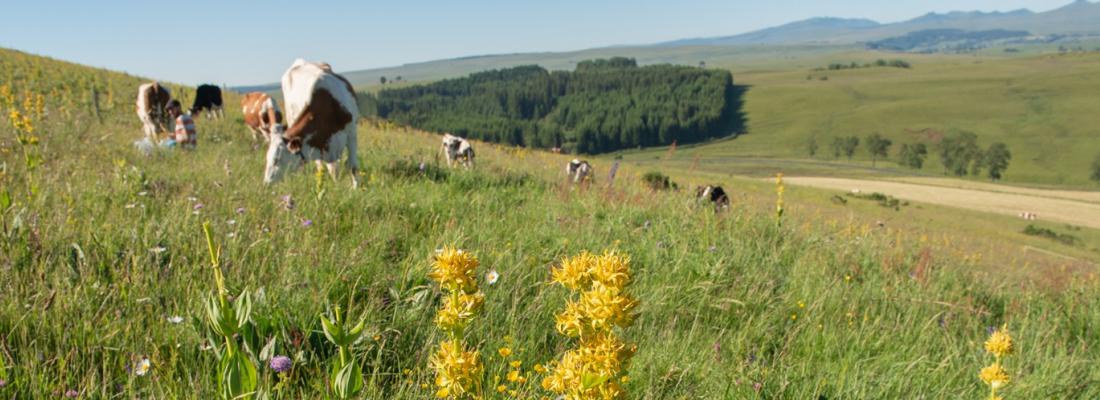Food, Global Health Reading time 5 min
Forage system is the key driver of mountain milk specificity
Published on 06 March 2020

The aims of this work were to determine the effect of upland origin on milk composition when comparing similar lowland and upland production system and to highlight the factors responsible for the added value of upland milk from commercial farms.
Tanker milk from 55 groups of farms (264 farms in total) in France, Slovakia, and Slovenia was collected twice during the indoor season and 3 times during the outdoor season. The tanker rounds were selected in each country to be balanced according to their origin (lowland or upland) and within upland or lowland groups, according to the forage systems: corn-based or grass-based forage system. At each milk sampling, the production conditions were recorded through on-farm surveys. The milk was analyzed for gross composition, carotenoids, minerals, fatty acids, phenolic compound derivatives,
volatile organic compound concentrations, and color.
The milk from upland and lowland areas differed in their contents of a few constituents. Upland milk was richer in not identified (n.i.) retention time (Rt) 13,59,
4-methylpentylbenzene, 1-methyl-2-n-hexylbenzene, and β-caryophyllene than lowland milk. These differences could be most likely attributable to the utilization of highly diversified and extensively managed semi-natural grasslands. The higher forbs content of upland pastures could be related as well to the richness in C18: 3n -3, CLA cis-9,trans-11, MUFA, and PUFA we observed in upland compared with lowland milk during the outdoor season. In contrast, grazing on lowland pastures rich in grasses gave a yellower milk that was richer in β-carotene.
Out of the few compounds showing a significant effect of origin or its interaction, most of the milk constituents were unaffected by the origin at all. However, almost all milk constituents differed according to the forage system and the season, and the differences observed between seasons can be attributed to differences in the cow diet composition.
Coppa, M.; Chassaing, C.; Sibra, C.; Cornu, A.; Verbic, J.; Golecky, J.; Engel, E.; Ratel, J.; Boudon, A.; Ferlay, A.; Martin, B., 2019. Forage system is the key driver of mountain milk specificity. Journal of Dairy Science, 102 (11): 10483-10499. http://dx.doi.org/10.3168/jds.2019-16726
This work, carried out in collaboration with the Association of Mountain Milk Producers (APLM), served as a basis for reflection on specifications for the production of MontLait © brand mountain milk.
